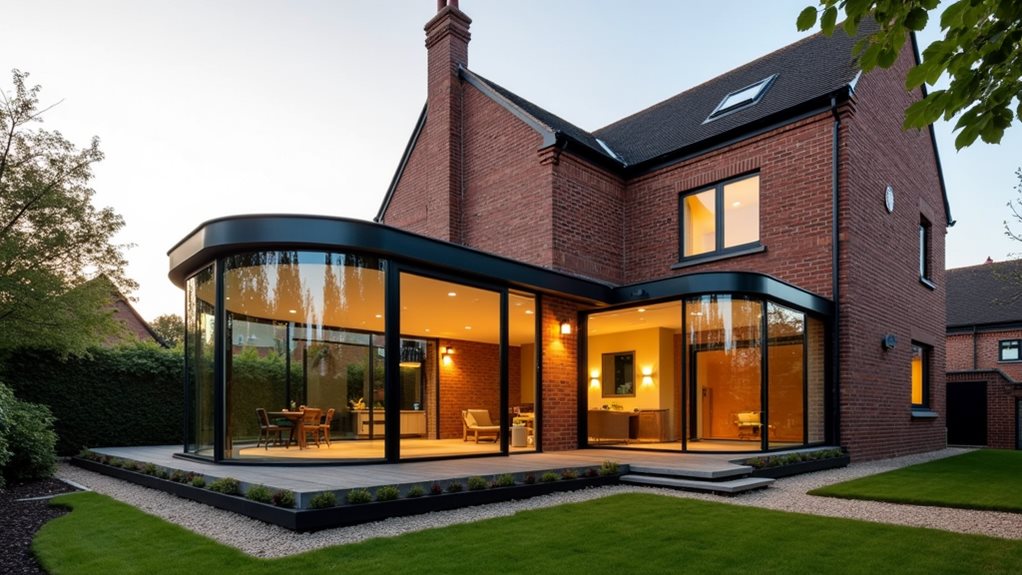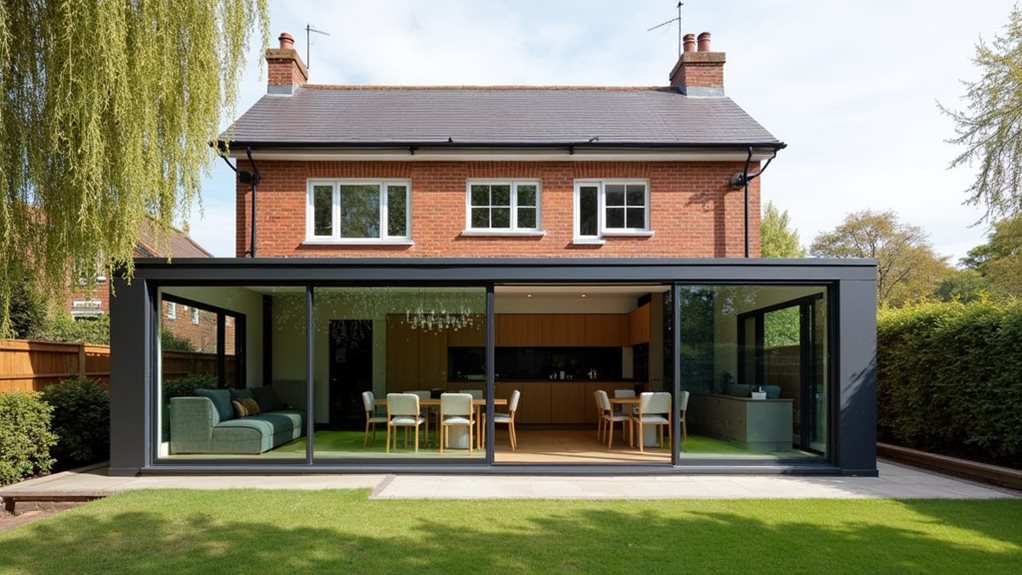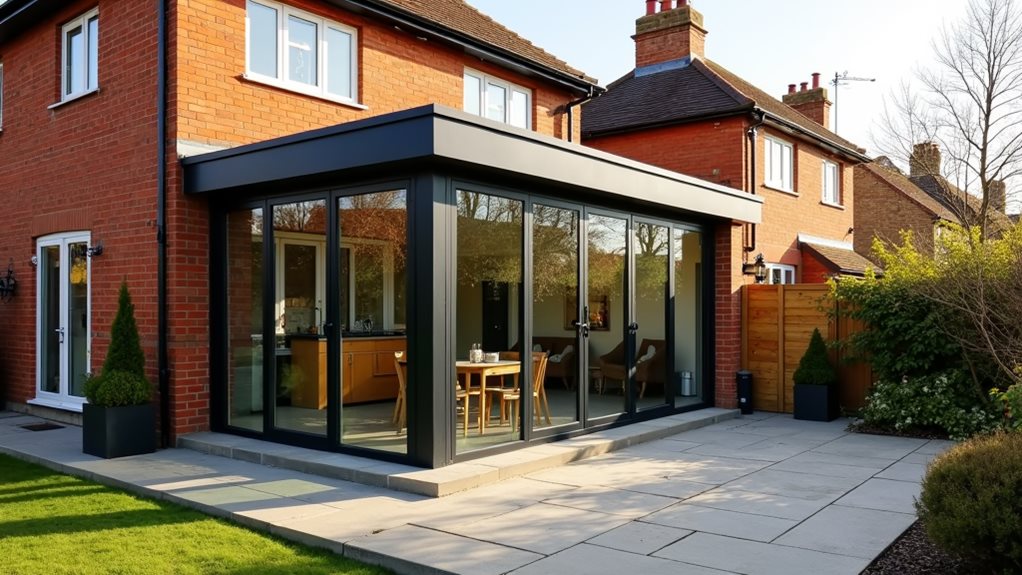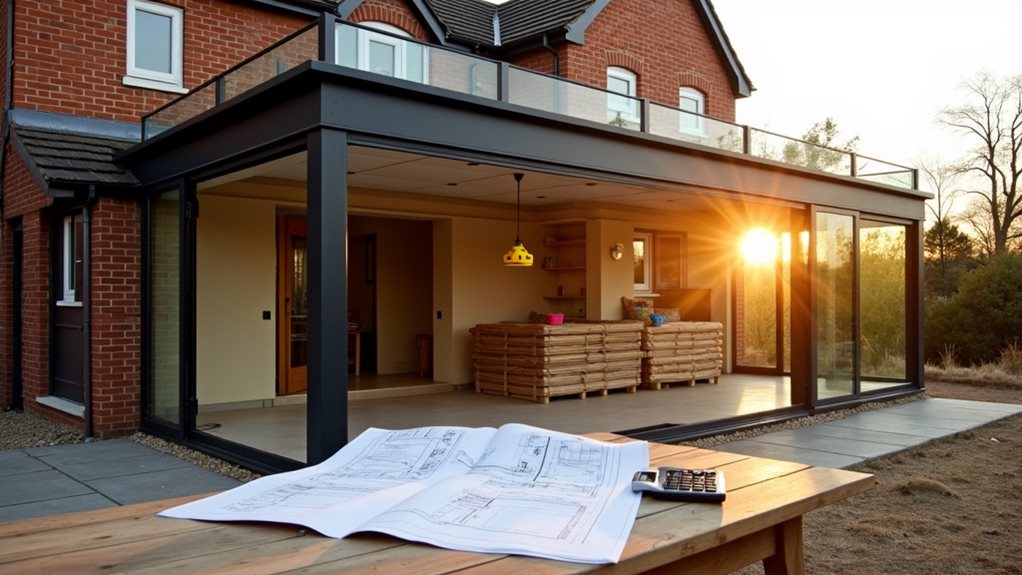Phone:
(701)814-6992
Physical address:
6296 Donnelly Plaza
Ratkeville, Bahamas.

Maximize your home's potential with a wraparound extension that transforms cramped spaces into a stunning, light-filled sanctuary.
A wraparound extension combines side and rear additions to create an L-shaped space that maximizes your home's potential. You'll need to start by obtaining necessary permissions, which typically takes 2-3 months, followed by 3-6 months of construction. Expect costs between £1,200-£3,900 per square meter, depending on your location and specifications. While planning, consider natural light, structural requirements, and how the new space will flow with your existing home. Understanding the complete process will help you navigate this transformative project successfully.

When you're looking to maximize your living space without sacrificing outdoor areas, a wraparound extension offers an innovative solution by combining side and rear extensions into an L-shaped addition.
This clever design approach transforms underutilized side alleyways and rear spaces into valuable living areas, making it particularly ideal for Victorian homes and urban properties. (Local builders) can provide valuable insights into the best design options for your specific home.
Your wraparound extension delivers exceptional space optimization while maintaining design flexibility. Expect to invest around £2,500 per square metre for quality construction and finishing.
You'll benefit from enhanced natural light through strategically placed roof lanterns or windows, and you can create versatile open-plan living spaces that perfectly suit your lifestyle.
Whether you're dreaming of a spacious kitchen-diner, adding a utility room, or creating a seamless connection to your garden, this extension type adapts to your needs.
It's especially effective for properties with existing rear projections, where the L-shaped design maximizes every available square foot. Plus, expert builders in Greater Manchester can guide you through navigating planning permission to ensure a smooth project execution.
Successful planning of your wraparound extension begins with thoughtful consideration of several interconnected factors.
Before diving into design aesthetics, you'll need to assess how your extension will harmonize with both your existing home and the surrounding environment while maintaining positive neighbor relations. Adding a glazed rooflight feature can transform your new dining space while maximizing natural illumination.
Here are the essential elements you'll need to address:
When planning your extension, you'll find that balancing these elements creates a design that's both beautiful and practical, while respecting your local community's character and regulations.

Building a wrap-around extension demands meticulous attention to structural requirements and strict adherence to building regulations.
You'll need to guarantee structural integrity through proper steel or engineered timber supports, while new concrete footings must form a solid foundation for your project.
Don't overlook the importance of preserving neighboring properties when planning demolition work.
When you're integrating old and new spaces, you'll face compliance challenges that require careful consideration.
The Party Wall Act is particularly important if you're in England or Wales, as you'll need to protect shared walls.
Remember, the more extensive your demolition plans, the more complex your structural scheme will become.
You'll need building control sign-off throughout the process, so it's vital to work with qualified professionals who understand local planning requirements.
As you commence on your wrap-around extension project, selecting the right materials and establishing a realistic timeline will considerably impact your project's success.
Your material selection can blend elements like glass, brick, and timber to create a seamless flow between indoor and outdoor spaces, while smart timeline management guarantees your project stays on track.

Understanding the financial scope of your wrap-around extension project sets the foundation for its overall success.
When planning your cost estimation, you'll need to take into account that basic extensions start from £1,200 per square meter, while high-end projects can reach £3,900, particularly in London and the South East.
Your budget allocation should account for more than just construction costs. You'll want to set aside 10-15% for professional fees, including architectural services and planning permissions.
Don't forget to include VAT and a 20% contingency fund for unexpected challenges. For a typical 30m² extension with a kitchen, you're looking at approximately £91,000.
Did you know that wraparound extensions can increase your home's value by up to 20%? As you've seen, these versatile additions offer an elegant solution to expand your living space while maintaining your property's character. By carefully planning your design, following regulations, and managing your budget effectively, you'll create a seamless connection between old and new that transforms your home's functionality and enhances its market appeal.